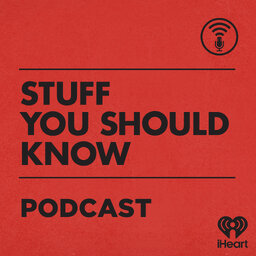Selects: How X-Rays Work
Like many huge discoveries, X-rays were accidentally stumbled upon. That serendipity led to a medical breakthrough still in use today. Learn about how X-rays are created and why they make such delightful images of our bones, in this classic episode.
Learn more about your ad-choices at https://www.iheartpodcastnetwork.com
 Stuff You Should Know
Stuff You Should Know


